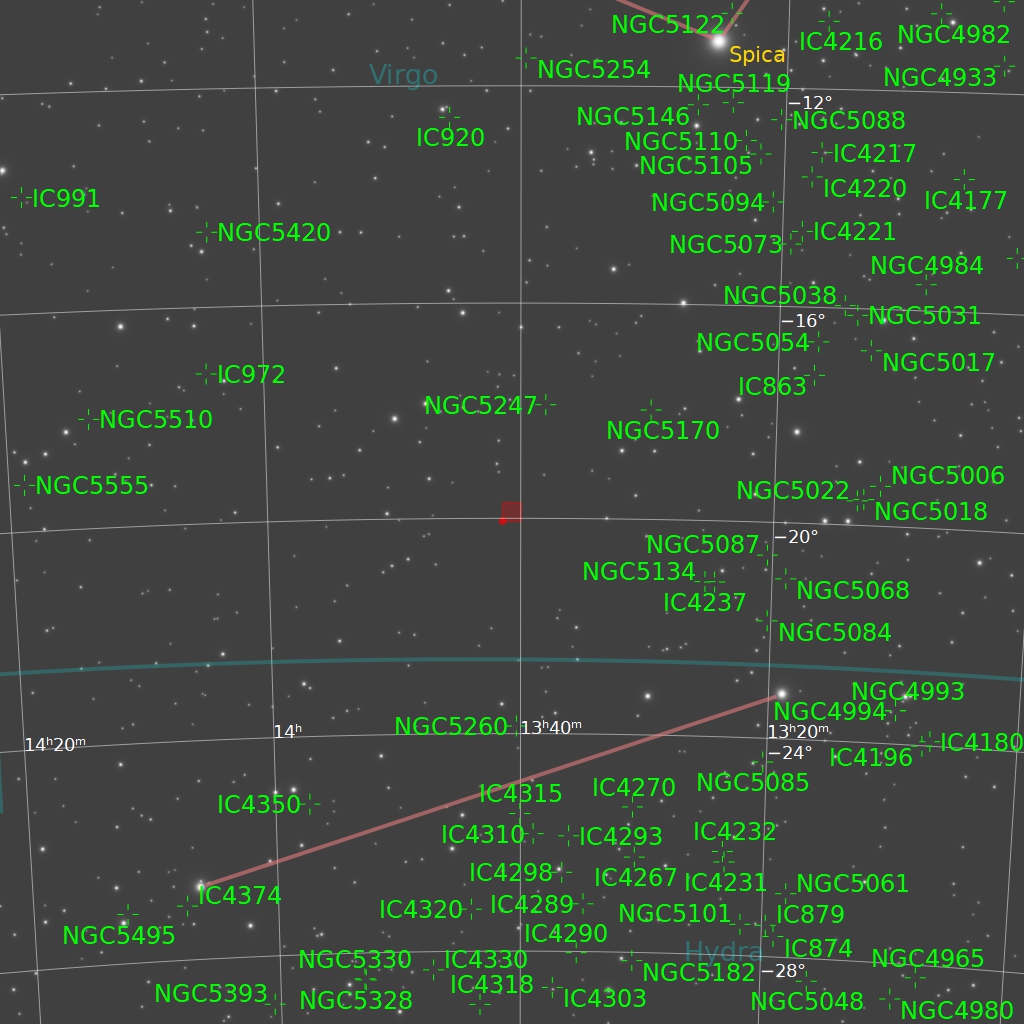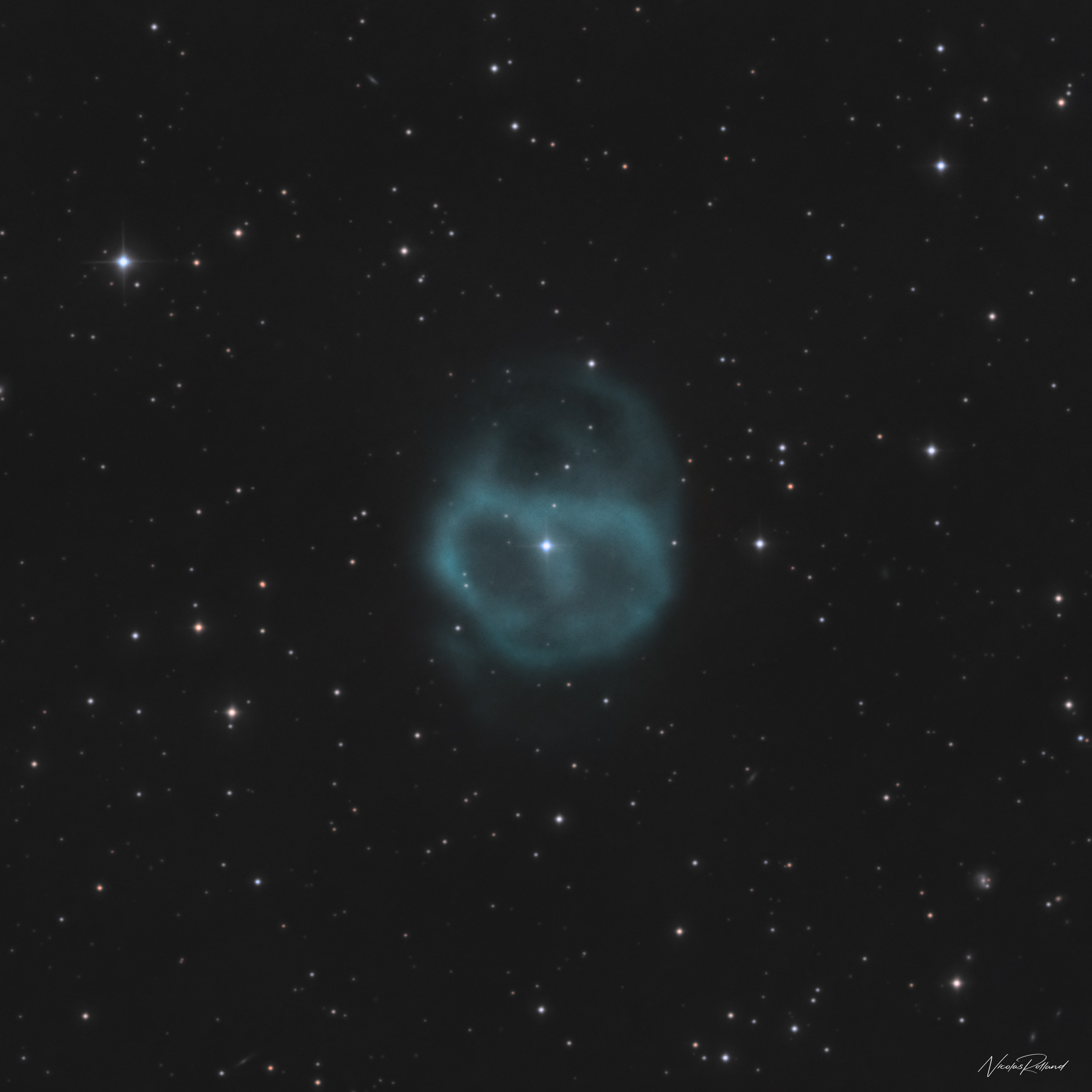Planetary Nebula
Abell 36
Abell 36 is a planetary nebula located in the constellation of Virgo, about 800 light years away from Earth. It is also known as PN A66 36.
The nebula was discovered in 1955 by the American astronomer George Abell, hence its name. It is the result of material being ejected from the central star, a dying sunlike star that has depleted its nuclear fuel.
Shrugging off its outer layers, the nebula’s central star is contracting and becoming hotter, evolving towards a final white dwarf phase. In fact, in Abell 36, the central star is estimated to have a surface temperature of over 73,000 K, compared to the Sun’s present 6,000 K temperature. As a result, the intensely hot star is much brighter in ultraviolet light, compared to its visual appearance here. The invisible ultraviolet light ionizes hydrogen and oxygen atoms in the nebula and ultimately powers the beautiful visible light glow.
TECHNICAL DATA
ACQUISITION DETAILS
OPTICS Planewave CDK24 @ F/6.5
CAMERA FLI PL 9000
MOUNT Mathis MI-1000/1250 with absolute encoders
FILTERS L, R, G, B
LOCATION El Sauce Observatory, Rio Hurtado, Chile
DATE May 2022
EXPOSURES 12.8 hours (OIII 59 x 600 sec, R 17 x 180 sec, G 27 x 180 sec, B 16 x 180 sec)
PROCESSING SOFTWARE Pixinsight, CCDstack, Photoshop
COPYRIGHTS Nicolas Rolland & Telescope Live

TARGET DETAILS
RA 13h 40m 41.4s
DEC -19° 52' 55.1"
SIZE 20.7 x 20.7 arcmin
ORIENTATION Up is 0.9 degrees E of N
CONSTELLATION Virgo
MAGNITUDE 12.2
DISTANCE 780 ly
